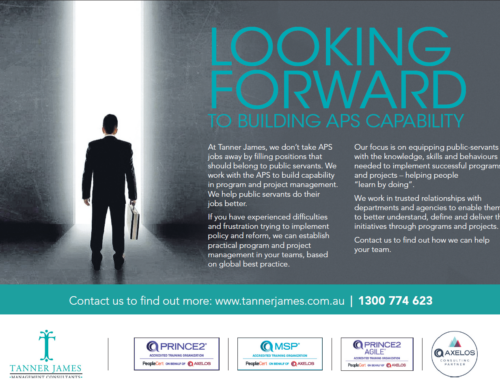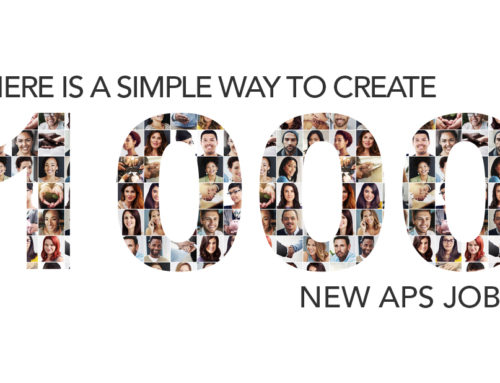So, what keeps you awake at night? This is a regular introductory question in meetings with clients across Canberra. The more that governments demand “more with less” of the APS, the greater the pressure and stress on everyone involved in policy development and implementation. Recent academic research has highlighted the impact of this “more with less” work scenario on the health of Senior Executives and Program and Project Managers. The delivery of work is changing and it is estimated that 20 percent of global economic activity occurs as projects. There is an inherent stressful nature underlying the delivery of projects of substantial value, which must also meet the triple constraints of time, cost and quality.
The key drivers of insomnia appear to be the stress induced by the lack of collaboration, poor stakeholder engagement and policy development and implementation and the consequential failure to realise the promised benefits of change initiatives.
But how much of this scenario do we inflict on ourselves? The catchcry of “The Minister wants or the Secretary wants” isn’t an excuse for poor planning and execution. They want to be comfortable with the approach being taken and confident that the approach proposed will deliver the desired outcomes and benefits. Any Minister I’ve dealt with would prefer clarity of the policy scenario and honesty in process particularly if that process highlighted potential barriers and mitigations and a realistic achievable timeline. Remember, it is their reputation and that of the government, which is at stake here and they are even more focussed than you on avoiding any adverse media headlines.
It is precisely this scenario that the AXELOS Global Best Practice suite of methods are designed to address. If as we are constantly told, change strategy is defeated by culture, we need to acknowledge that led and managed well, program and project management creates a culture of trust. Exception reporting means that you can walk into the office of your Departmental Secretary or CEO knowing that your initiative is on track because your trusted team hasn’t told you that it isn’t. Management theory in the 1980’s and 90’s focussed strongly on corporate culture and individual worker empowerment. Can you imagine the impact on an individual of working in an organization in which you are encouraged – indeed required – to report when your goals are not being met?
I accept that without accountability and ownership from executives and rigour and vigour from project managers and their teams this won’t happen, but then…if you are the leader…
In times of fiscal restraint an investment in the AXELOS methods can drive huge savings financially as well as eliminating the angst in programme and project failure.
A study by the UK Office of Government Commerce (OGC) demonstrated that an expenditure of 3 to 5 percent of a change initiatives funds to establish the P3O centre of excellence to instil rigour and discipline exponentially increased the prospects of the realization of anticipated benefits. So, when you are missing the mark by 30% to 60% that’s a small increment to success.
In terms of investing in capability there needs to be clarity as to the problem we are solving or the opportunity being exploited. We need to clearly enunciate the drivers of change, and to understand the critical determinants of and the measures of success. How will you gain the skillset you require and how will you embed the processes and systems you need to ensure success – the way we work around here to build that culture of trust. Whilst everyone discusses digital transformation, ICT as the enablers of change cannot hope to deliver the required outputs for the drivers of change, (the policy areas) unless the expected outcomes, which will deliver the benefits have been collaboratively determined and defined with stakeholders.
Delivering benefits should be the key driver of strategy and strategic change. Understanding the changing environment and the lived experience of our stakeholders brings the ‘voice of the customer’ into the design and delivery of initiatives. Collaborate with all your stakeholders – they are allies in the change process not adversaries. The wider the net is cast to engage stakeholders the greater the prospects of truly understanding the lived experience and delivering critical benefits.
Keeping all stakeholders engaged over the longer term requires evidence of quick wins to give a sense of accomplishment to both the agency and the stakeholders to keep everyone on-board for the duration. A pro-active collaborative approach to stakeholder engagement is a key success factor in policy implementation via program and project management. It is not a “set and forget” process. It requires a collaborative mindset and extensive coordination across the organisation and very effective monitoring and communication.
The organisational capability to function in that way only emerges with higher levels of program and project management maturity with clear accountability for the business changes and for benefits realization at the individual and collective levels.
So train your key personnel, apply the methods with our coaching support and embed this way of working so that your culture accepts that “this is the way we do things around here”.
Then you’ll get back to that good night of sleep.






Leave A Comment